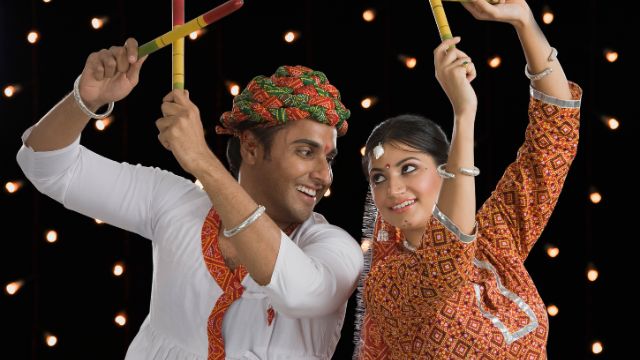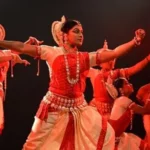In western India, Gujarat offers a plethora of cultural and traditional gifts to the onlookers. The Gujarati dance forms are exquisite, diverse and full of colors. They speak for the long cherishes and cared Gujarati history and traditions. The Gujarati dancers go through tough trainings and learn the art from their childhood to master the craft well during their teen years. Here is a sneak preview of these dance forms.
Gujarati Dance History
Gujarat’s centuries-old dances reflect its culture. Gujarat’s dance genres arose from historical migrations, connections with neighboring places, and the dynamic mix of Hindu, Jain, and Islamic traditions. Gujaratis employ these dances socially, religiously, and artistically.
Gujarati Dance Variations
Gujarat has various traditional dance styles with distinct characteristics, regional differences, and cultural significance. Gujarat has various traditional dances:
1. Garba Dance

Gujarati garba is a popular dance form. Amba worship practice during Navaratri is the origin of this dance form. Garba dancers form concentric circles around a goddess statue or earthen lamp (garbha). Garba is Amba devotional dance. It celebrates good defeating evil and builds community.
2. Dandiya Raas
Dandiya Raas, from Lord Krishna’s humorous Raas Lila, is associated with Navaratri. In Dandiya Raas, couples or groups dance rhythmically and collaboratively with ornamented sticks (dandiyas). Like Garba, this energetic dance form symbolizes joy, brotherhood, and good triumphing over evil.
3. Bhavai
Bhavai, a Gujarati folk dance-drama, has been performed for centuries. Many associate it with Bhavai folk theater. Bhavai blends dance, drama, acrobatics, and folklore and mythology with pot-headed characters. Bhavai is moral, social, and funny. It demonstrates Gujaratis’ resilience and creativity.
4. Tippani Dance
This traditional dance was influenced by the nomadic culture of Kutch, Gujarat. Tippani dancers use metal plates or wooden boards for precise movement and rhythm. Steppers create a symphony. This dancing form reflects the Kutchi community’s culture, history, and connection to arid settings.
Significance and Themes
Gujarati culture, religion, and society value traditional dances. Worship, celebration, storytelling, and community connection employ dances. Gujarati dancing addresses essential topics:
Religion devotion
Gujarati Navaratri dances include Garba and Dandiya Raas.
Folklore, Mythology
History, mythology, and folklore inspire Gujarati dances. These stories are told expressively. Community dances like Garba and Dandiya Raas promote togetherness, belonging, and cultural identity.
Conclusion
Tradition and art mixes up creating a harmonious expression in the Gujarati dances. With the colorful dresses and wonderful footwork, the dances become mesmerizing for the beholders. For ages, these traditional dances take place during the occasions and in the coming days also, they will add new feathers to the cultural tapestry of the state.
Santosh Kumar, the author behind IndiasStuffs.com, is passionate about sharing valuable insights on a variety of topics, including lifestyle, technology, and Indian culture.
Page Contents

